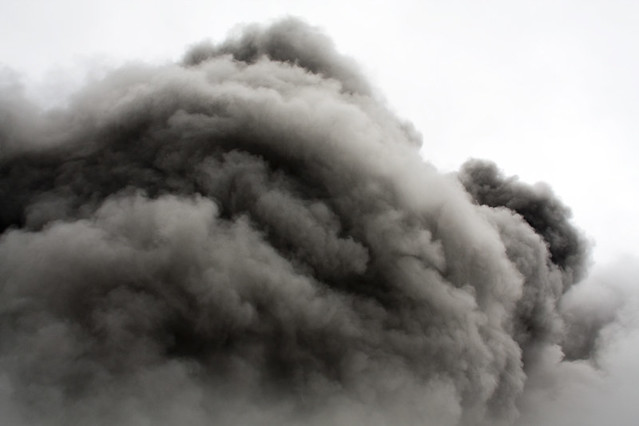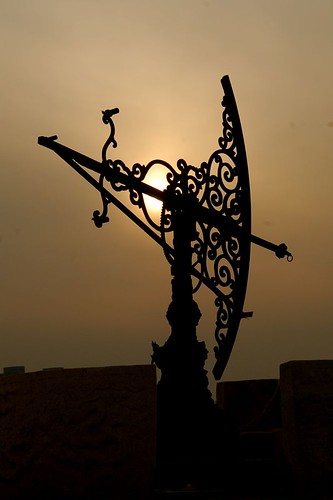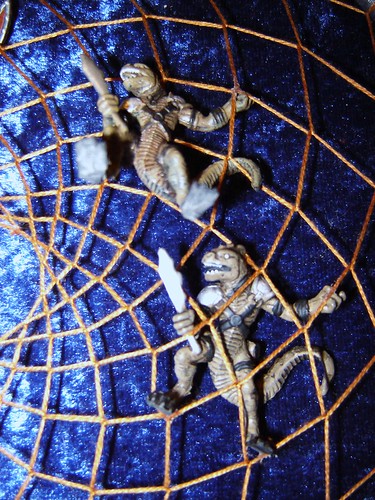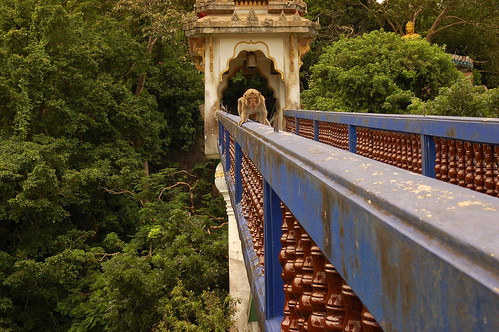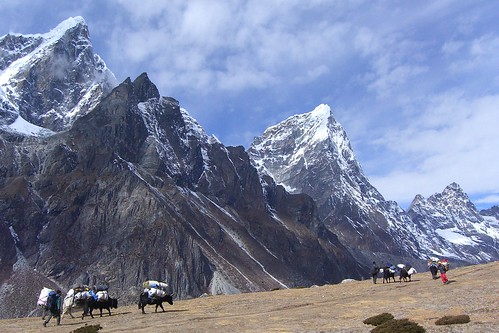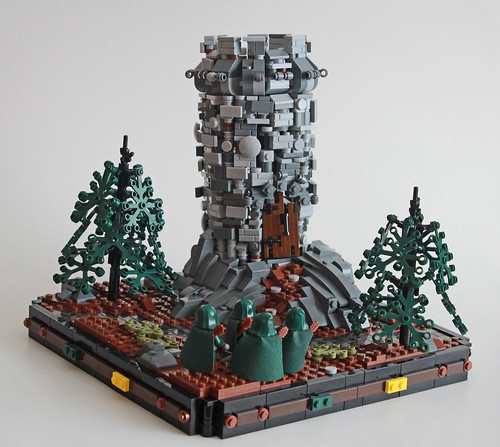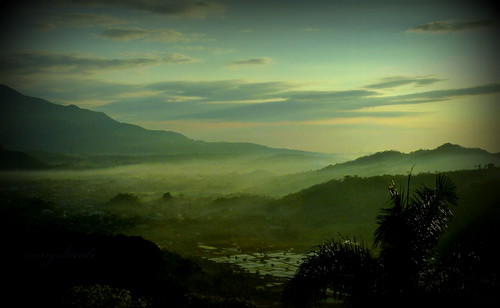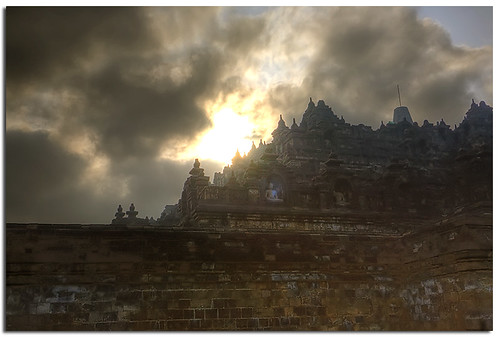The altar of Nung Chiang, according to Afu, who saw it at the Observatory, was local to the unnamed village where the party had been resting for the past several weeks. The party returned to the village and sought out the shrine and the altar. Screened by the plants of the jungle, several members of the party had, during their weeks in the village, walked near it without seeing it. They sat on the ground, Afu began to pray. The smell of cooking rice filled the air, mixed with the smell of flowers. A man with golden eyes appeared, and they all understood that he was also a dragon. He asked him why they had come. Tetsukich and Beatriss explained. He told them he would give them the power to defeat General Goyat. They should return and confront him in the Courts of the Seasons, near the citadel where they had already met him. What does he want with Gwinch? Beatriss asked. Nung Chiang explained that Goyat wanted the blood of an outlander to awaken the sleeping army. "Good thing we didn’t bring him here." "Yes."
The party made their plans to go back down into Tempat Larang. They couldn’t find the sinkhole that led to the lair of the snake people from which they’d emerged several weeks ago. They met some hunters in the jungle who sowed them some strong vines that grew from trees at the top of the cliff and dangled all the way down into the city. There was a problem. One of the hunters shook a vine. Giant wasps emerged from a hole in the cliff. Everyone ran into the jungle to take cover. Beatriss paid the hunters with a gem they’d taken from the black dragon and enlisted their help in killing the wasps. Everyone prepared an arrow, while one of the hunters went to shake the vines again. After several seconds, two wasps, each the size of a sheep apeeared at the top of the cliff—and were shot down with arrows. Then Beatriss decided she would climb down. Asking the rest of the party to cover her, she drew her sword of invisibility and started to climb down the vine. (No one asked her to explain.) She chose a section far from where she’d seen the wasps emerged and was cautious to shake the vine as little as possible until she reached the part of the cliff where she’d seen the wasps emerge—there she moved more quickly. She caught a glimpse of the wasps papery nest but saw nothing moving and didn’t linger to look more closely. It wasn’t until she reached the bottom, that she saw two more wasps crawl out. These crawled up the vines, then flew to the top to be shot by arrows.
As they moved through the city toward the citadel and the Court of Seasons, the party were distracted by another large, intact building, several stories tall and adorned with numerous turrets, balconies, and statuary.
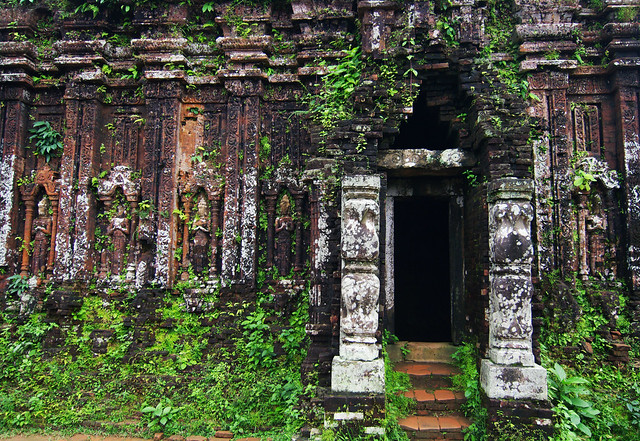
Circling it, they found an archway where, under the vines, they hoped they might find a door. As they approached, the vines lashed out to attack them, entangling their limbs. They broke free or hacked free without losing anyone to the strangling vines, but decide to leave exploring that building for another day.
When the party reached the Citadel General Goyat emerged to meet them, twitching and smiling. He asked for Gwinch, and Beatriss answered, “We don’t have him.” Under their breath, she and Tetsukichi began reciting the incantations for summoning Nung Chaing. Even before they began, a thing white mist began to blow in from above the city.
Goyat’s smile turned into a sneer. “I have given you more than enough time. Useless! You will be destroyed.”
The wind grew stronger, blowing away the layer of ash that covered the ground and revealing the colored quadrants of the Seasons of the Courts. Beatriss and Tetsukichi did as Nung Chaing had instructed. Tetuskichi took his position in one court—choosing that of Winter while Beatriss chose the court of Spring. Their companions stayed close to them, but on the edge of the Courts of the Seasons.
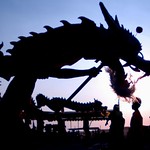 The mist thickened into a dome, and a golden dragon swooped in from the top just as the dome closed at its apex. Goyat, his face twisted into a terrible grimace called for the help of the powers of darkness. A bolt of black lightning sliced through the mist-dome and struck Goyat. He turned into a pile of cinders. The cinders throbbed and pulsated and then took on the shape of a giant man of black stone. The stone cracked, revealing the face of Goyat. Beatriss and Tetsukichi fainted and collapsed to the ground. The Dragon attacked the stone man.
The mist thickened into a dome, and a golden dragon swooped in from the top just as the dome closed at its apex. Goyat, his face twisted into a terrible grimace called for the help of the powers of darkness. A bolt of black lightning sliced through the mist-dome and struck Goyat. He turned into a pile of cinders. The cinders throbbed and pulsated and then took on the shape of a giant man of black stone. The stone cracked, revealing the face of Goyat. Beatriss and Tetsukichi fainted and collapsed to the ground. The Dragon attacked the stone man.The Dragon turned from gold to silvery white as it summoned javelins of ice from the mist and hurled them at the stone man. The stone man broke off chunks of buildings and hurled them at the dragon. The rest of the party struck at the stone man’s feet with their swords or chanted a prayer of support for the dragon. Next the dragon turned gold and descended, slapping the ground with its tail. A tentacle of stone sprang up and grasped the stone man as the dragon returned to the air, turning first red and then black. The stone man continued to swat the dragon and hurl stones. The dragon resumed its white color and hurled more ice javelins, destroying the stone man.
As the stone man crumbled, hundreds of soldiers began to rise from the dust. Although each soldier could be obliterated with a simple swing of a sword, they were utterly fearless, and attacked without ceaselessly, swarming out of every crack in the ground. The hardiest members of the party guarded the defenseless bodies of Tetsukichi and Beatriss. And the dragon cycled through its seasons: Silver to Gold to Red to Black. It settled on the ground in the midst of the melee, drawing the attacks of as many soldiers as possible.
The dust and ash spewing from the ground did not only take on the form of soldiers, but also began to spin itself into an immense black cloud. Suddenly the globe took on a solid form and then shattered, revealing an immense floating human head—that of Goyat. The head opened its mouth and spewed a torrent of bones at the dragon. The dragon responded by breathing fire, burning the flesh off the floating head.
The charred, floating skull swooped down on the dragon, snapping at its back as the dragon molted from gold to red and then black. Then, as the dragon turned back to silver, it lashed out with its claws, swatting the skull against the wall of the citadel. The dragon turned to gold and summoned another stone tentacle from the ground. The tentacle lashed the head as the dragon rested in its red and black states. By the time the skull had destroyed the tentacle it was battered and cracked. It swooped down on the dragon once more, but the dragon, now silvery white once more, lashed the skull solidly with its tail. The skull shattered. At once, the ash soldiers crumbled. The dragon flew into the dome of mist, which began to dissipate with the breeze. Beatriss and Tetsukichi rose as if from a long, refreshing sleep.
